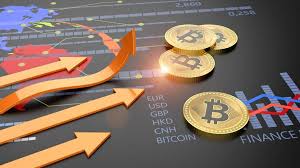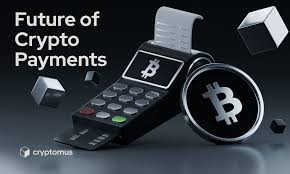
The way we pay for goods and services is undergoing a major transformation. By 2025, traditional cash and cards are increasingly giving way to faster, safer, and more innovative payment methods such as cryptocurrencies, contactless “tap” payments, and emerging digital solutions.
These advancements promise to make transactions more seamless, secure, and accessible worldwide. But what exactly does the future of payments look like? Let’s explore the trends shaping how we’ll pay in the years to come.
1. Contactless Payments: Convenience at Your Fingertips
Contactless payments, enabled by NFC (Near Field Communication) technology, allow consumers to simply tap their cards or smartphones to complete transactions instantly.
Benefits include:
- Speed and ease — no need to swipe or enter PINs for small purchases.
- Enhanced security with tokenization reducing fraud risk.
- Growing acceptance at stores, public transport, and vending machines.
Contactless payments have become mainstream, especially after the pandemic accelerated digital adoption.
2. Cryptocurrency: A New Frontier
Cryptocurrencies like Bitcoin, Ethereum, and an increasing number of stablecoins are challenging traditional finance by offering:
- Decentralized, peer-to-peer transactions without intermediaries.
- Potential for lower fees and faster cross-border payments.
- New financial products like smart contracts and programmable money.
Central banks worldwide are exploring Central Bank Digital Currencies (CBDCs) to combine crypto advantages with regulatory oversight.
Despite volatility and regulatory uncertainties, crypto payments are gaining traction among merchants and consumers alike.
3. Mobile Wallets and Super Apps
Mobile wallets (Apple Pay, Google Pay, Samsung Pay) integrate multiple payment methods into one app, enabling:
- Secure, contactless payments.
- Loyalty programs, ticketing, and peer-to-peer transfers.
- Integration with other financial services like banking and insurance.
Super apps popular in Asia, such as WeChat and Grab, go beyond payments to offer an all-in-one digital lifestyle platform.
4. Biometric Payments and Enhanced Security
Biometric authentication—using fingerprints, facial recognition, or voice—adds a layer of security and convenience to payments by:
- Reducing fraud and identity theft.
- Eliminating the need for PINs or passwords.
- Enabling faster checkouts in stores and online.
As biometrics improve, they will become standard in payment authorization.
5. The Rise of Invisible Payments
The future also points to invisible payments—transactions that happen automatically without the user needing to actively pay, such as:
- Subscription services charging periodically.
- Smart devices automatically replenishing supplies and billing.
- In-car and in-store payments triggered by presence or usage.
This frictionless experience will redefine convenience in commerce.
6. Challenges Ahead
- Regulatory clarity is needed for cryptocurrencies and new digital currencies.
- Ensuring privacy and data security in biometric and digital payments.
- Bridging the digital divide to ensure inclusive access.
- Managing fraud prevention in increasingly complex payment ecosystems.
Overcoming these challenges is critical for widespread adoption.
Final Thoughts
The future of payments is digital, diverse, and dynamic. From tap-and-go cards to blockchain-based currencies and invisible transactions, technology is making payments faster, safer, and more convenient than ever.
Staying informed and adaptable will help consumers, businesses, and regulators navigate this evolving landscape—unlocking new possibilities for how money moves in a connected world.
